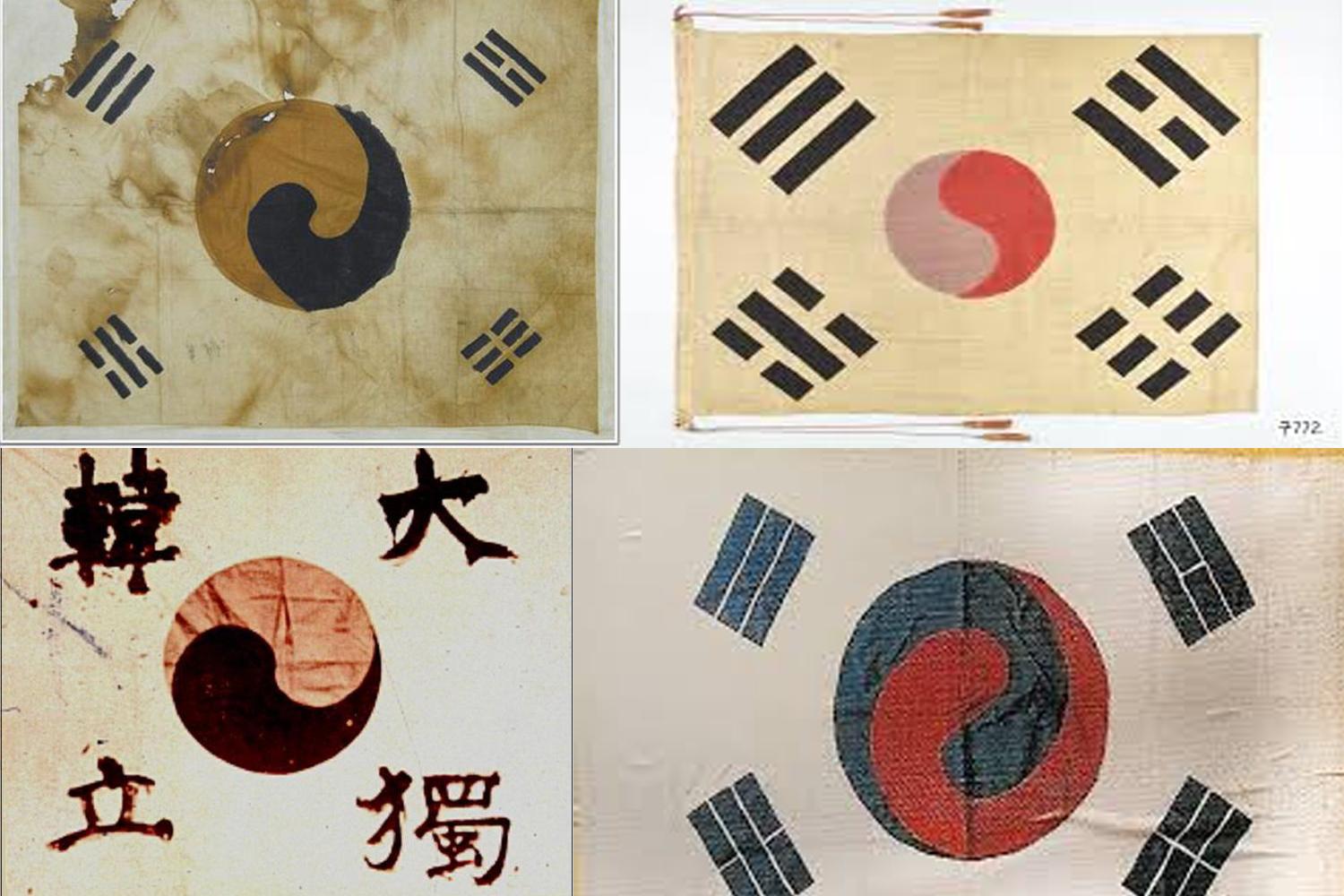The national flag of South Korea is also known as the Taegeukgi (태극기). In this article we will take a closer look at its origin and history, and learn about the meaning behind its unique design!
ORIGINS OF THE TAEGEUKGI
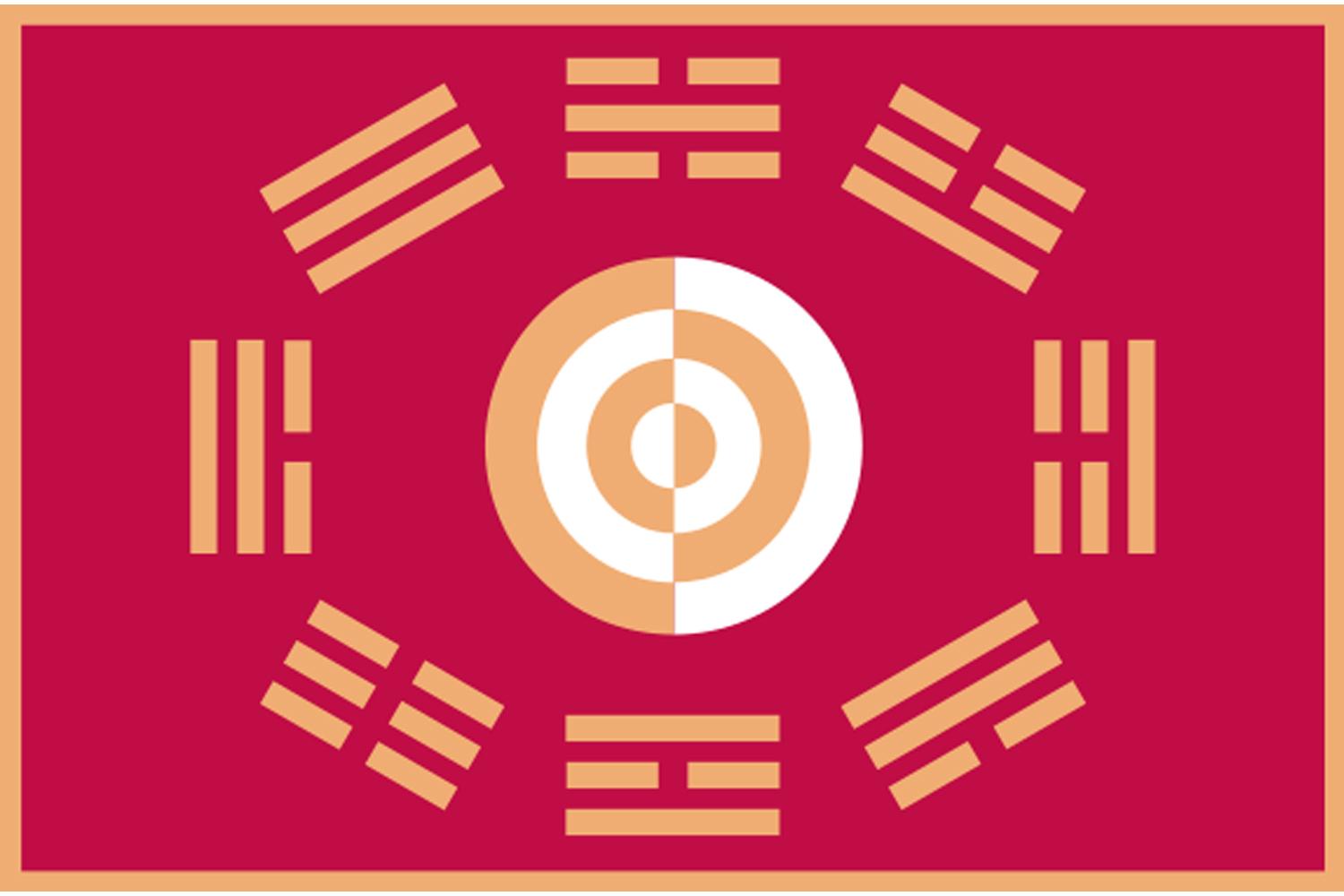 Royal Standard Of The Joseon Court
Royal Standard Of The Joseon Court
To trace the origins of the national flag of South Korea, we need to go all the way back to the royal standard of the Joseon court.
The first version of a national flag was created in connection to the signing ceremony of the United States–Korea Treaty on May 22, 1882, during the Joseon era. The United Stated had demanded that Korea use a national flag for the signing ceremony.
However, at the time the closest thing to a national flag was the royal standard of the Joseon court.
Taking inspiration from the royal standard, King Gojong of Joseon decided to personally participate in the creation of a new flag.
For its colors, he chose white to represent the people, blue for officials and red for the king. The opinion of the official Kim Hong-jip was then taken into account to decide on the design, and black trigrams were added to create the first version of the Taegeukgi flag.
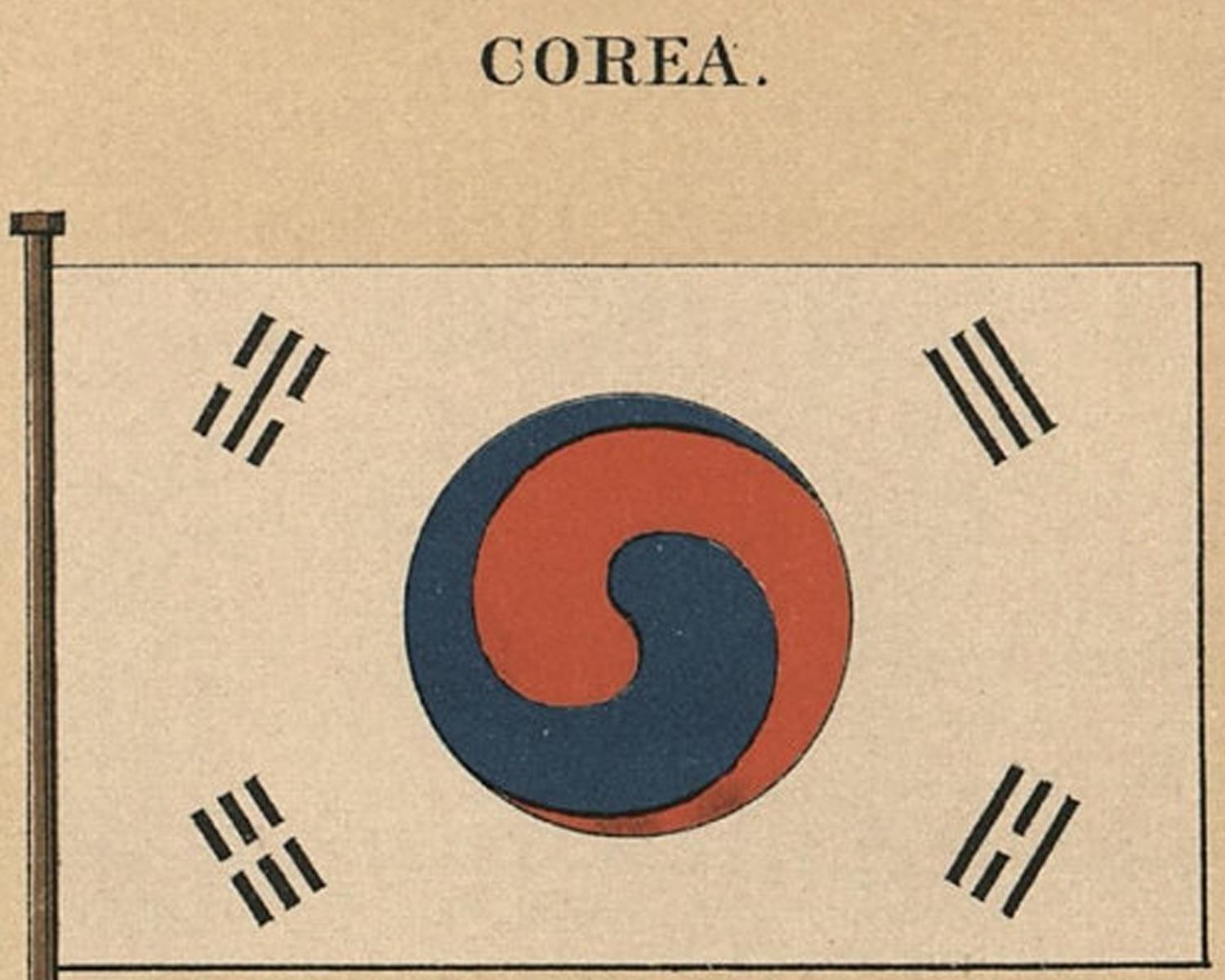 Flag Used At The Signing Of The United States-Korea Treaty (조·미수호통상조약 朝美修好通商條約) Of 1882
Flag Used At The Signing Of The United States-Korea Treaty (조·미수호통상조약 朝美修好通商條約) Of 1882
The finalized version of this first national flag of Korea is attributed to the Joseon delegate Lee Eung-jun, who drew the design by hand on a ship going to the United States.
This would be the design that was used at the signing of the treaty with the United States.
THE HISTORY OF TAEGEUKGI
_
FIRST STAGE
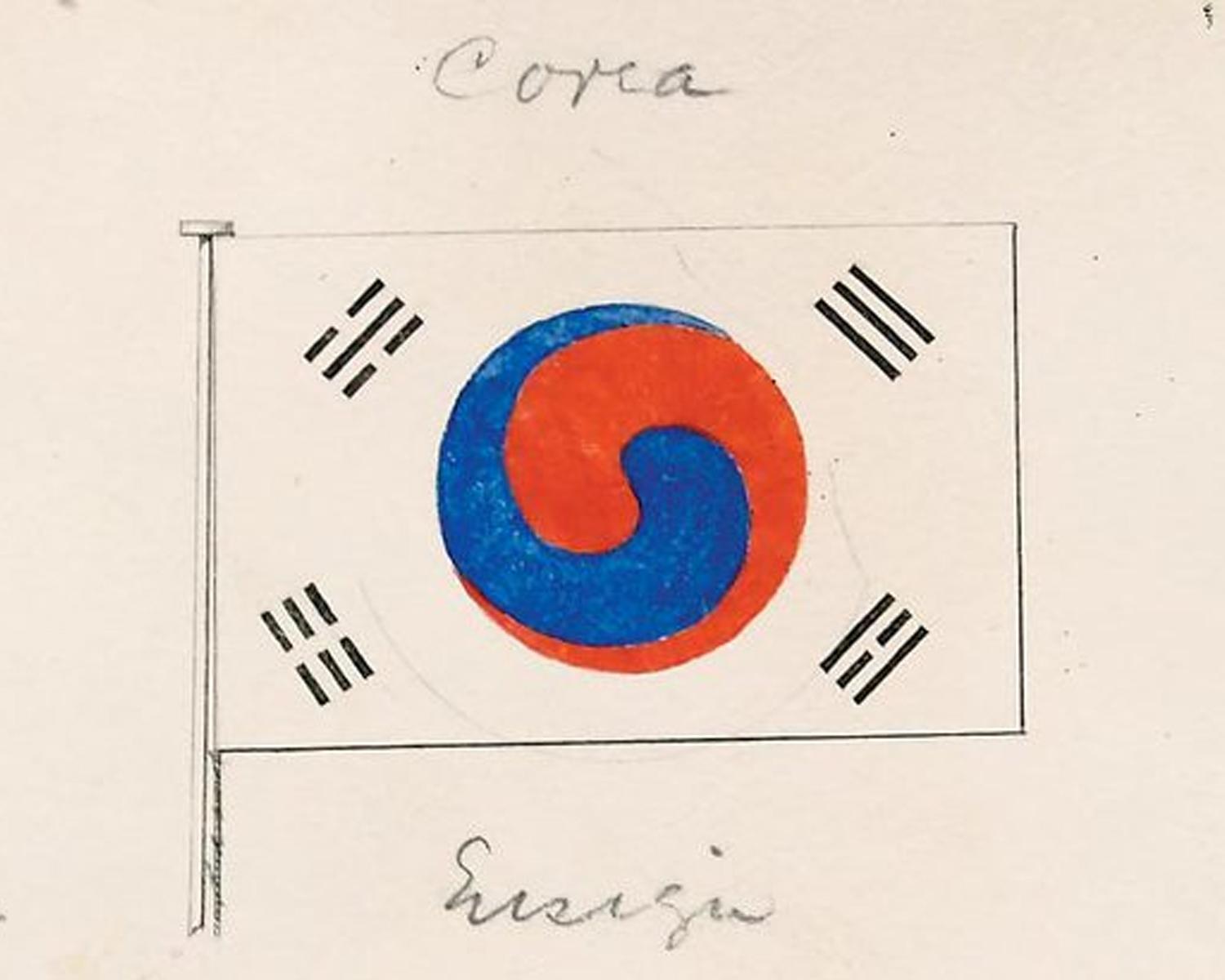
The first stage of the creation of a Korean national flag was, as we learned above, initiated ahead of the treaty signing with the United States.
This first design, used by the Joseon court, differs in some respects from the modern flag. The Taegeuk symbol in the center has a different design, and the proportion and order of the four trigrams are also not the same.
_
SECOND STAGE
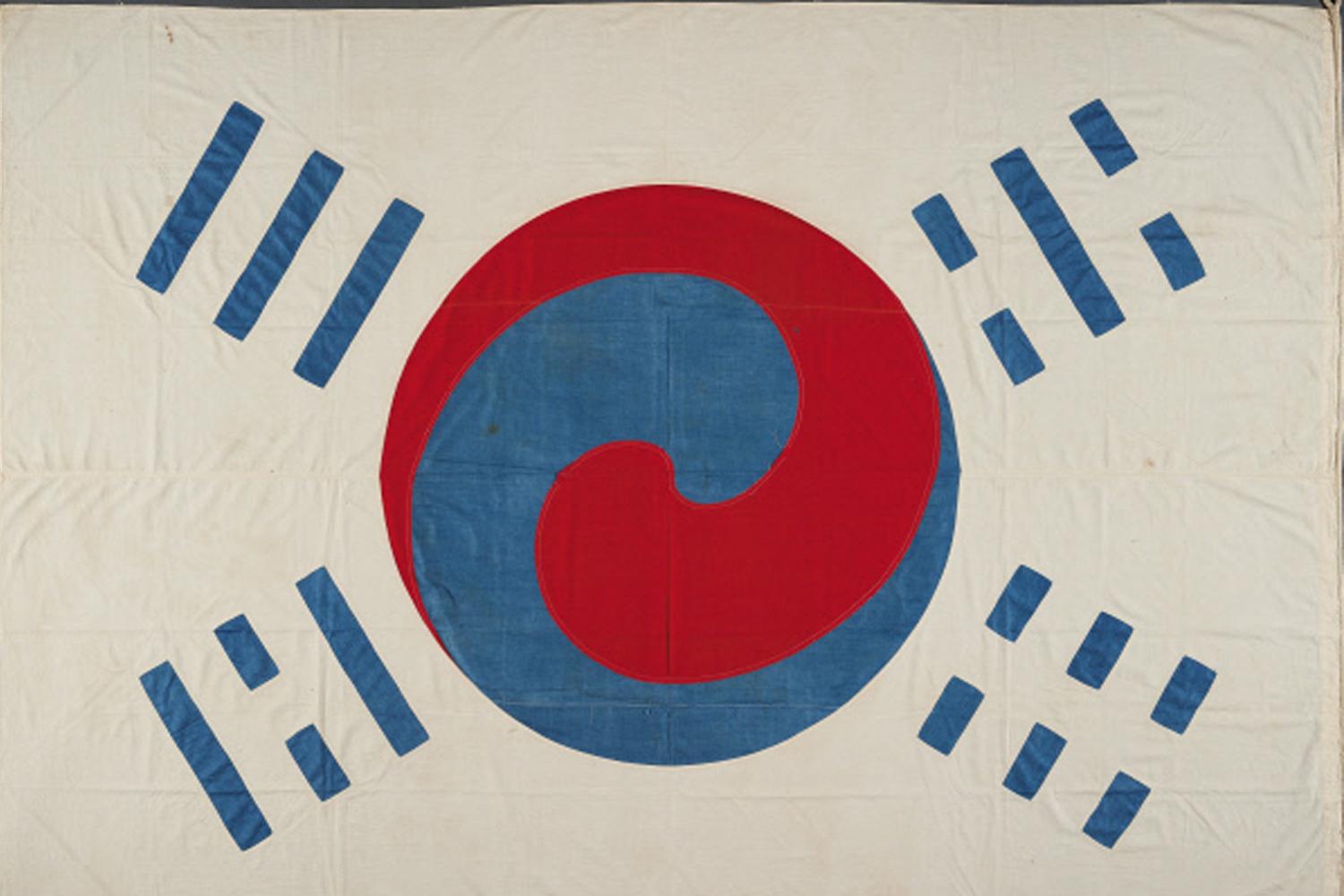
The picture above is the second known version of the flag. It was given by King Gojong to the American diplomatic advisor Owen N. Denny in 1885, and as a result the flag is sometimes called “Denny’s Taegeukgi”.
Since no physical flags of the very first Taegeukgi design have survived to this day, Denny’s Taegeukgi is the oldest still existing Korean national flag.
Denny’s Taegeukgi was preserved by descendants of the diplomatic advisor. In 1981, they donated it to the National Museum of Korea, where the public can view it during special exhibitions.
_
THIRD STAGE
The Third Initiation Of The Flag Came In Many Forms. The Third Flag Has The Slogan "Korean Independence" Written Instead Of Trigrams.
The next set of Taegeukgi designs were created by different independence movement groups during the Japanese colonial era, and as a result it came in many different versions.
At this time, no official version of the flag existed, something which could cause confusion, But we can also see that they all looked quite similar.
_
FOURTH STAGE

Above is the Korean flag that was hoisted during the 1900 Paris Exposition.
This version sees the Taegeuk symbol in the centre flipped, with blue to the left and red to the right. Furthermore, the four trigrams are drawn in a cross pattern rather than being placed in the corners.
At this point in time, there was still no one official version of the flag.
_
FIFTH STAGE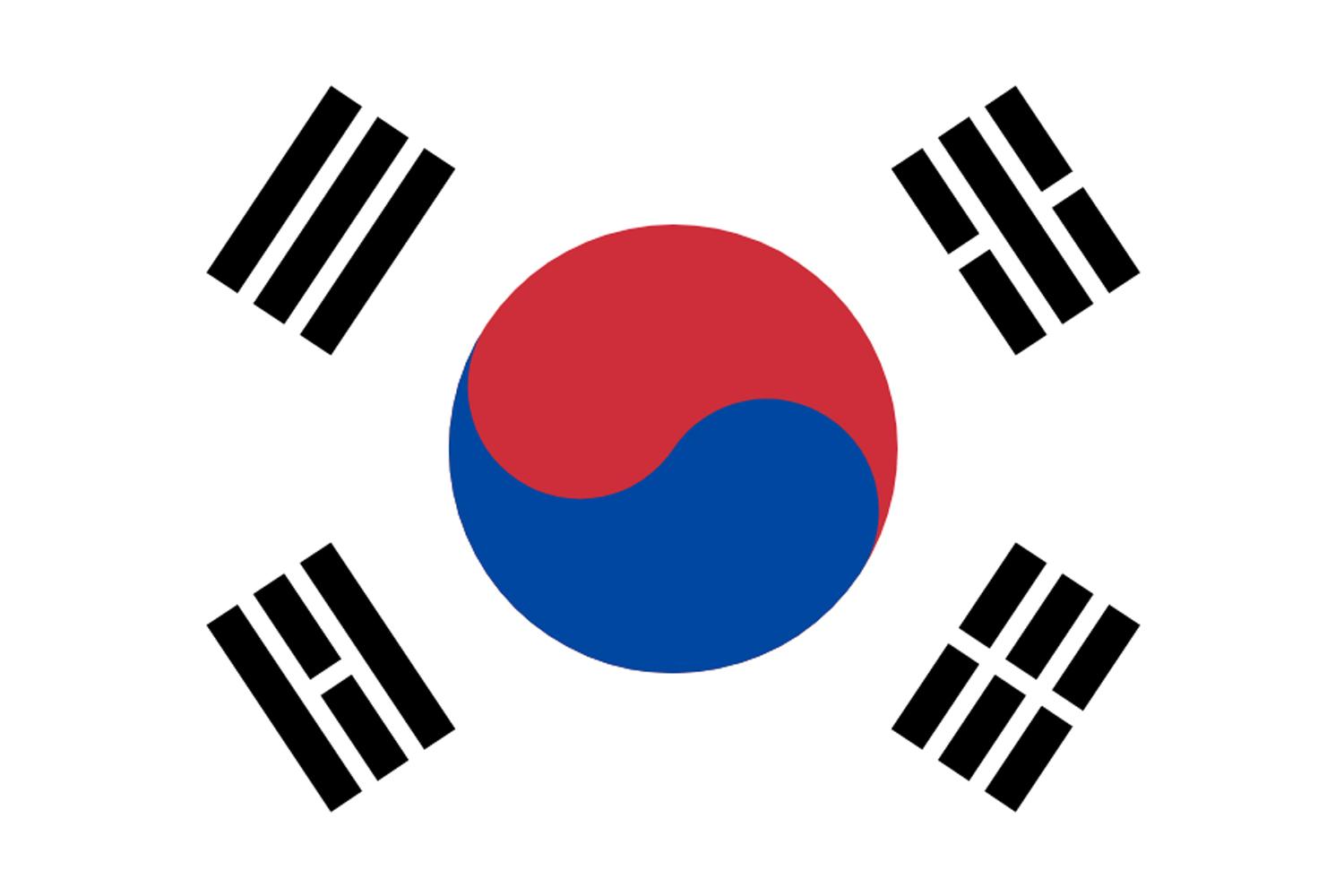
Above is the result of the fifth and final stage of the creation of a Korean flag. This flag was announced by the Korean government on October 15, 1949.
It is the flag we today recognize as the South Korean national flag. Korea having regained independence, it is said that this final design was decided on by Korean government first after many twists and turns and lengthy debates.
Some voices advocated for a completely new design, but more argued against.
We can see that the version of the flag, used by groups fightning for independence, came to influence the final design. In this way, the memory of the patriots who died in the independence movement lives on.
Perhaps a new national flag will be created in the future if the peninsula will be reunified.
WHY IS IT CALLED TAEGEUKGI?
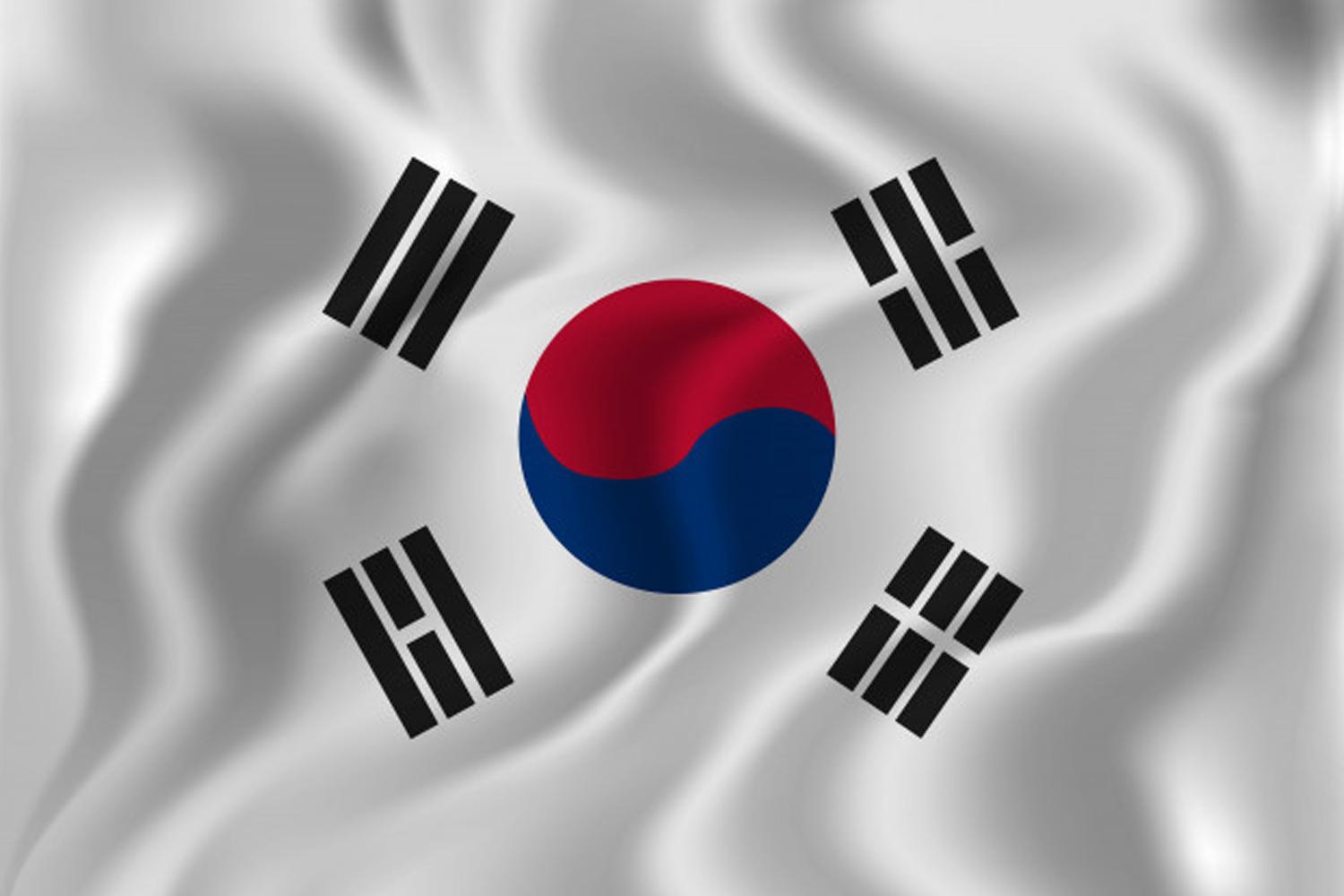
So why is South Korea’s flag called the Taegugki? The name comes from the so called Taegeuk symbol found at the center of the flag (Taegeukgi can also be transcribed as Taegukgi).
From historical records, we know that the first version of the flag, created during the Joseon era, was in fact referred to as the "Joseon flag" (조선 국기) rather than Taegeukgi.
So why is it called the Taegeukgi rather than "the Joseon flag" or "the flag of South Korea"?
Actually, the flag was referred to as the Joseon flag for 27 years, from its first version created in 1882 all the way to the March 1st Movement in 1919.
The name Taegeukgi was first used on March 1, 1919, when 33 independence activists famously read out the Korean Declaration of Independence.
The change of name can therefore be traced to these activists, who fought fiercely to gain independence from Japan.
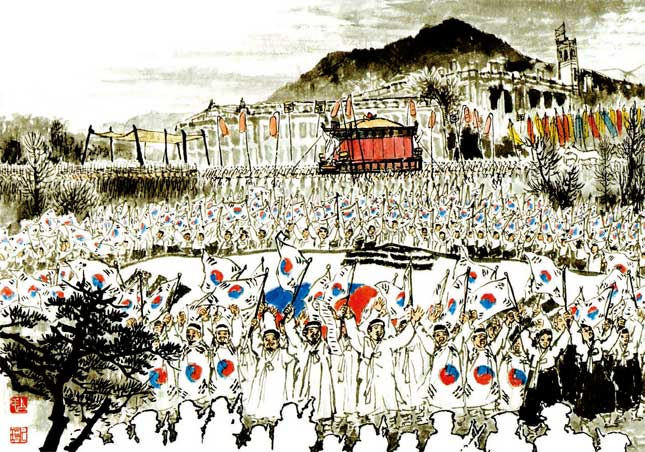
The activists gathered at noon at Tapgol Park in Seoul to read out the Korean Declaration of Independence. Each carrying a Korean flag, this marked the start of the March 1st Movement.
During the Japanese occupation, it was illegal to even produce the Joseon flag. In order to conceal the production of these flags, the activists decided to refer to the flag as the Taegeukgi, and this name has become most common way to refer to the national flag of modern Korea.
THE COMPONENTS OF THE TAEGEUKGI
The Taegeukgi flag has a white background, and on this we find a Taegeuk symbol in the center, and a trigram in each of the four corner.
Let’s have a look at the meaning behind the different components.
_
WHITE BACKGROUND
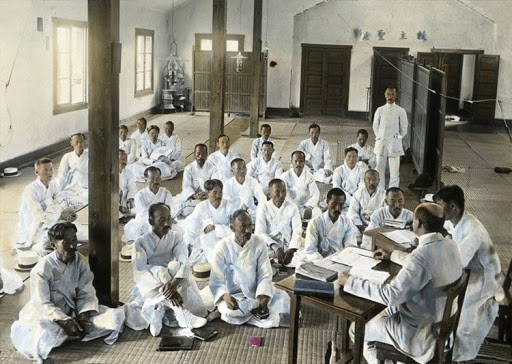
Koreans have long considered white to be sacred. That is why Koreans often wore white cotton clothes, and they were often called the white-clad people (백의민족).
The white background thus represents the bright, pure and peace-loving white-clad people of Korea.
_
TAEGEUK SYMBOL
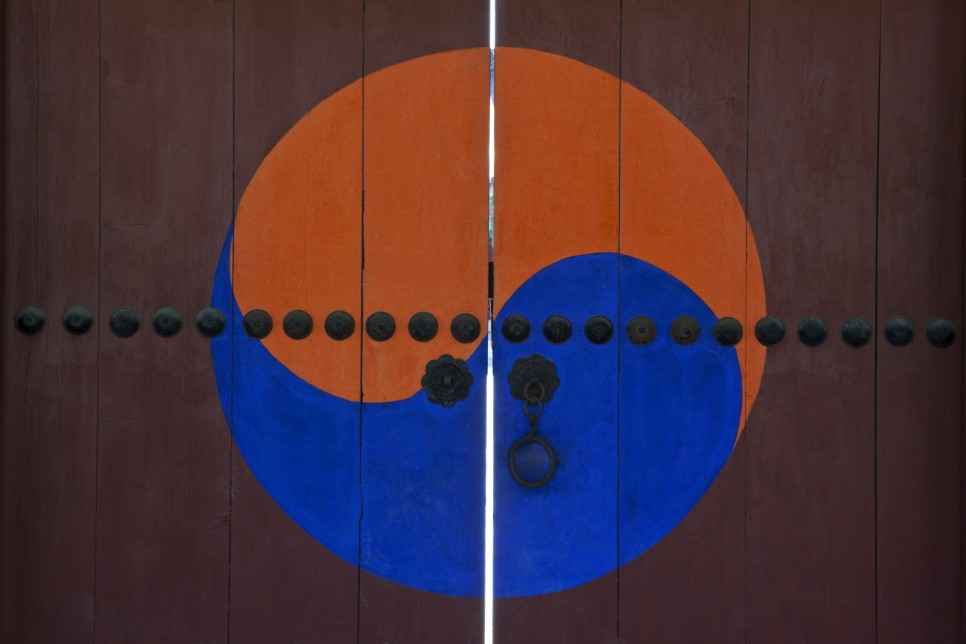
The pattern on the picture above (yes, it does resemble the Pepsi logo) is the Taegeuk symbol.
It has been used by Koreans since ancient times.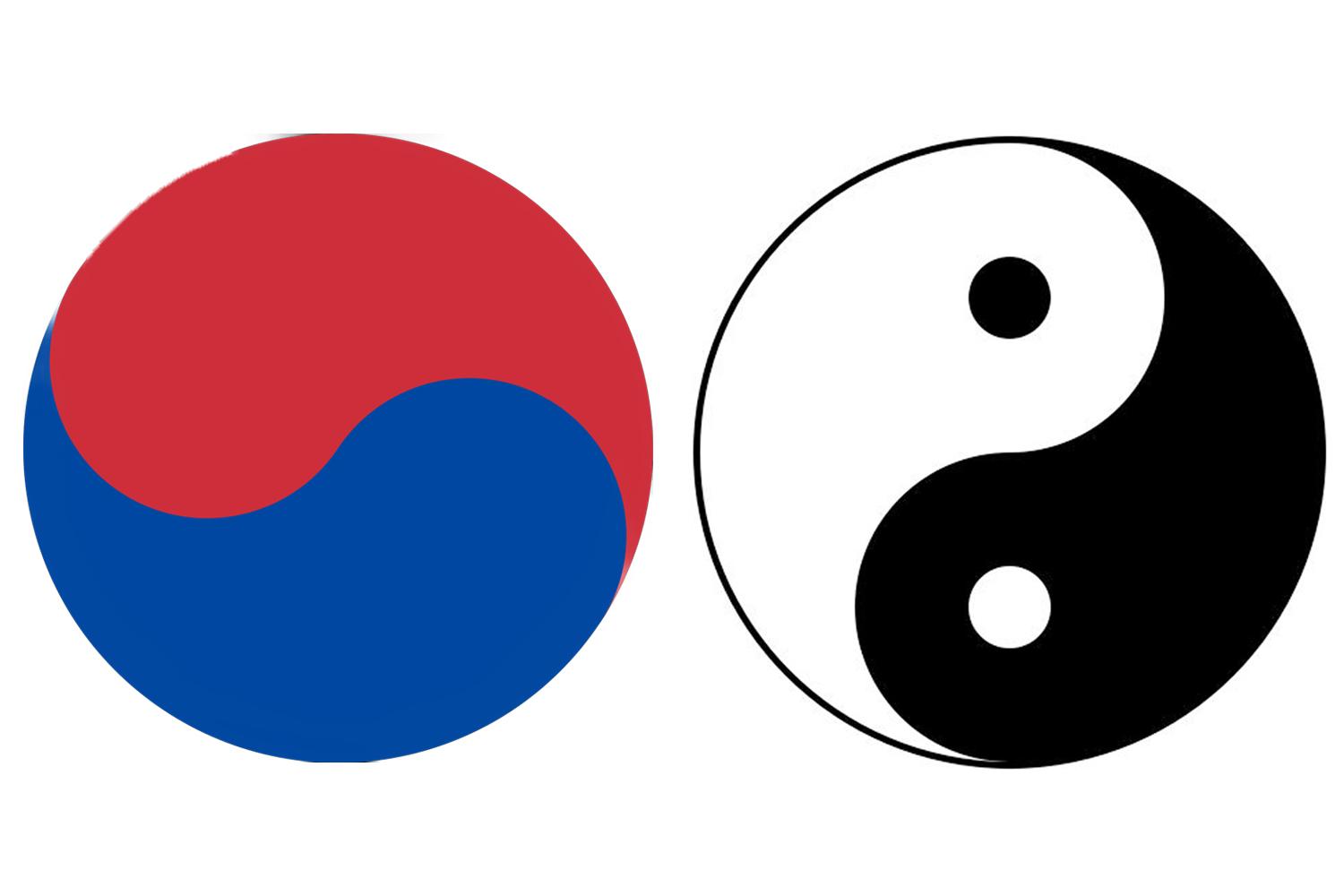 Korean Taegeuk Symbol And Taegeuk Symbol Used In East Asia
Korean Taegeuk Symbol And Taegeuk Symbol Used In East Asia
The Korean Taegeuk is a reinterpretation of a Confucian Taegeuk symbol (which many of us know as the Yin-Yang symbol).
Looking at the color and pattern, you can see that red and blue meet along a S-shaped curve, forming a circle.
The red represents positive (yang) and the blue negative (yin) cosmic forces.
Eastern philosophy believes that everything in the universe arises and develops through the interactions of the positive and negative.
_
THE FOUR TRIGRAMS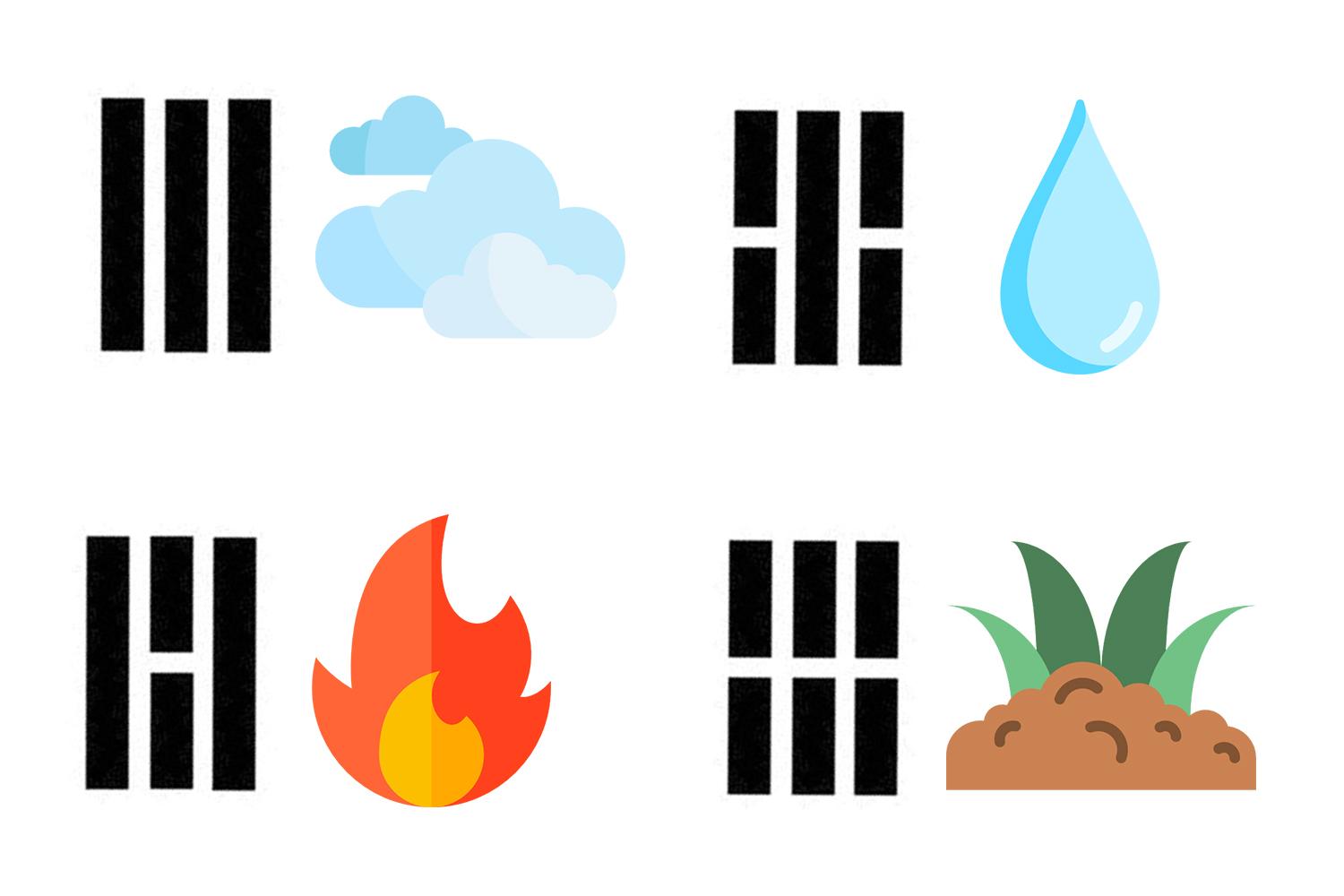
Foreigners and Korean alike tend to get the four black trigrams wrong when trying to draw the Korean flag from memory.
The trigrams symbolize the principles of nature and humans. Placed around the Taegeuk symbol, they are symbols of unification and harmony.
The four trigrams all carry their own meanings. The “geon” trigram (☰) represents Heaven, the “gon” trigram (☷) the earth, the “gam” trigram (☵) water, and the “ri” trigram (☲) represents fire.
There are additional meanings to the trigrams, such as cardinal points, family relations and more, but usually they are explained to represent natural objects.
Incorporating all these elements, the Taegeukgi can be said to contain a vision of harmony, unification, happiness and peace.
HOW TO PROPERLY DRAW THE TAEGEUKGI
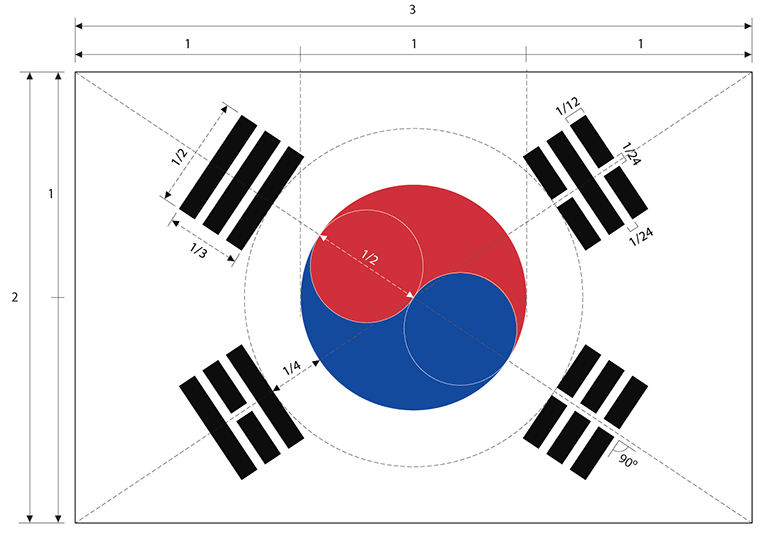
Let’s have a look at how to get the proportions and colors right when drawing the Korean flag!
First, the width and height are in the ratio of 3:2. The Taegeuk symbol is placed in the center, with the trigrams drawn in the corner at rations which can be seen above.
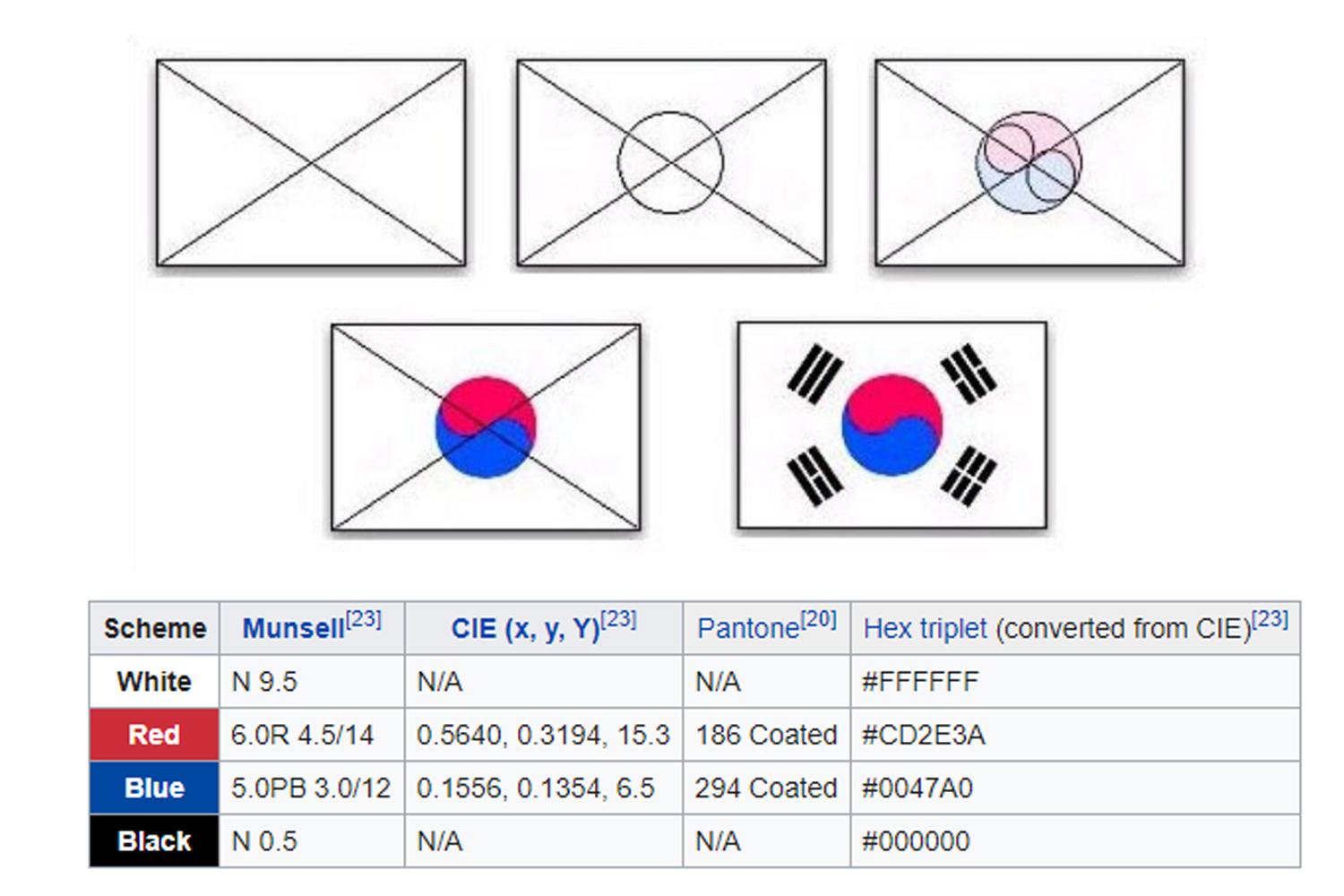
And of course, the colors are important too! Below you can find the hex colors for the flag:
- Background (white): #FFFFFF
- Taegeuk (red): #CD2E3A
- Taegeuk (blue): #0047A0
- Trigrams (black): #000000

Next a pro tip for remembering where to place the different trigrams!
Starting from the top left corner, draw an S. The trigrams are made up of 3, 4, 5 and 6 bars, and you just have to increase with one bar in accordance to the picture above.
Easy to remember, right?
WHEN TO HOIST THE TAEGEUKGI
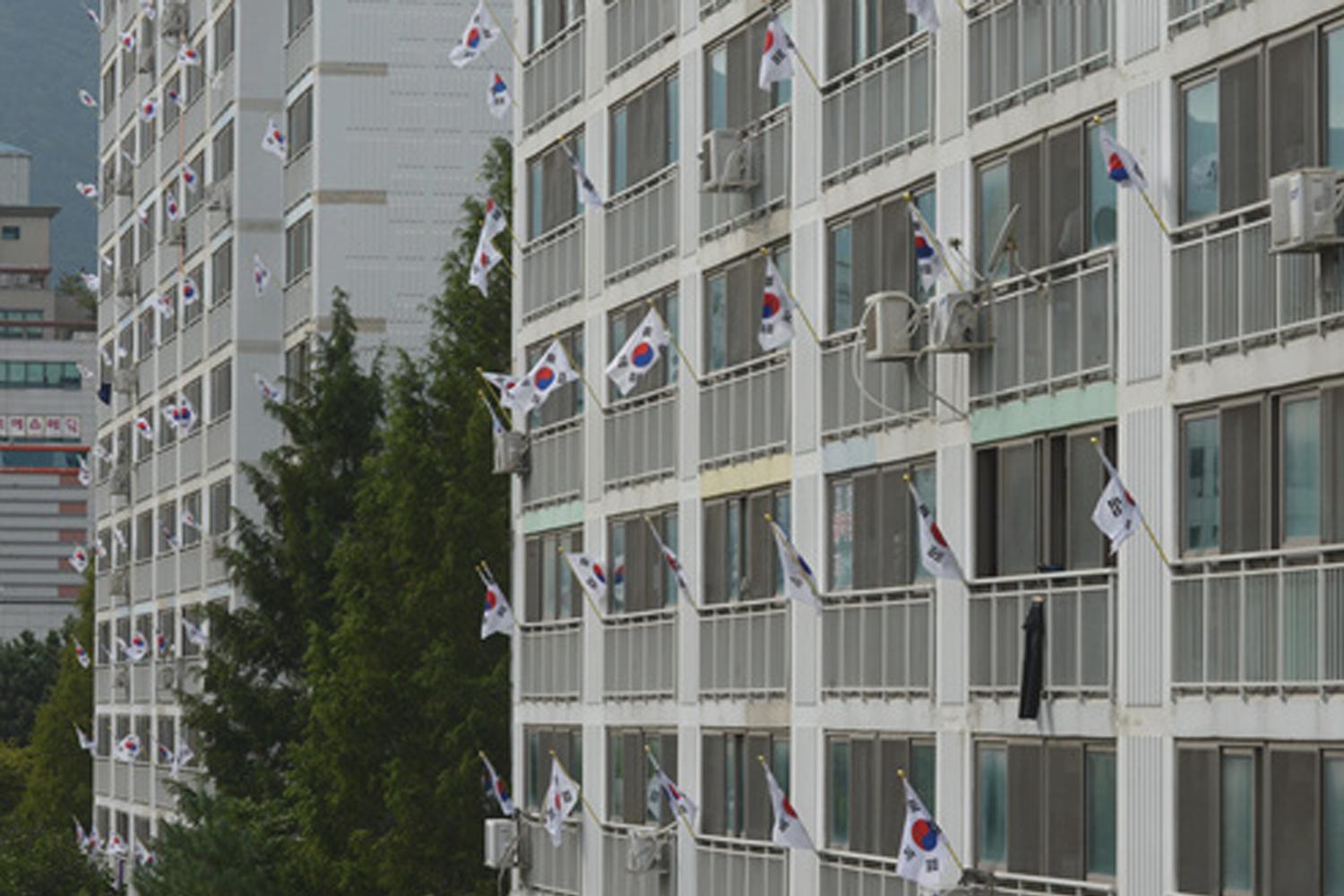
The Taegeukgi is usually hoisted on five major national holidays:
Independence Day (March 1), Constitution Day (July 17), Liberation Day (August 15), National Foundation Day (October 3), Hangul Day (October 9), but also on the Memorial Day (June 6) and Armed Forces Day (October 1).
Up until the early 2000s, you could see the Taegeukgi everywhere on these days, with more or less every household hoisting their own flag.
But these days, there seems to have been a change in sentiments.
A recent survey showed that only one third of the South Koreans have a Taegeukgi flag at home.
This gives support to the claim that Koreans nowadays don’t consider hoisting a physical flag on national holidays as important as in the past.
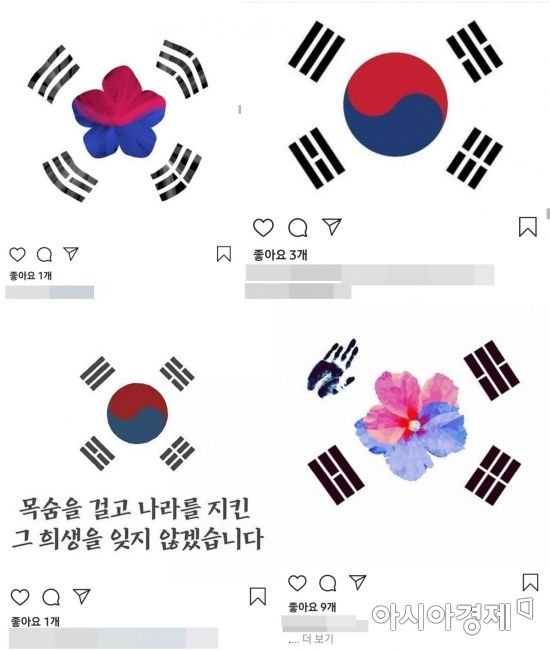
Instead of physical flags, today many Koreans instead choose a digital version of the flag to display on their social media on national holidays.
It’s a different way to commemorate and celebrate, but the respect for the flag and the country is the same.
WHAT THE TAEGEUKGI MEANS TO KOREANS TODAY
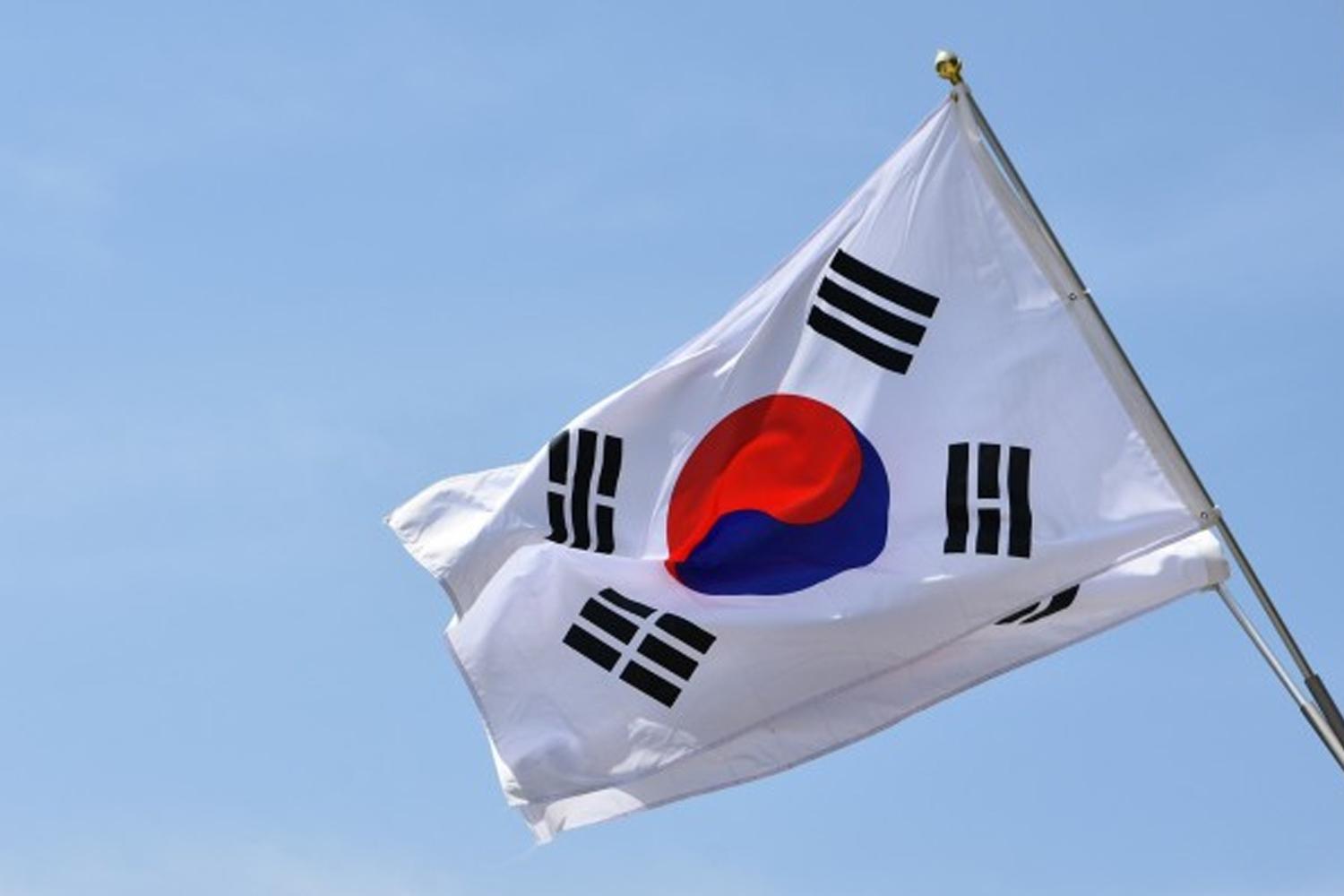
As we have seen, the national flag of Korea is imbedded with meaning and symbolism. In addition to the meaning of each element of the flag, to many the Taegeukgi represents patriotism and fight for freedom.
But during the last five years or so, the flag has come to carry some negative connotations as well.
This is much because of the so called Taegeukgi rallies (태극기 집회). These are regular rallies held by far-right groups in Korea, where they gather with Taegeukgi flags at Gwanghwamun square.
These gatherings have especially been frowned upon by the public after many of the participants showed up without wearing face masks this year, resulting in them becoming a cause of the second wave of the coronavirus.
Waving Taegeukgi flags and claiming to be patriots fighting for the sake of their country, these groups have earned the nickname Taegeukgi Units (태극기 부대).
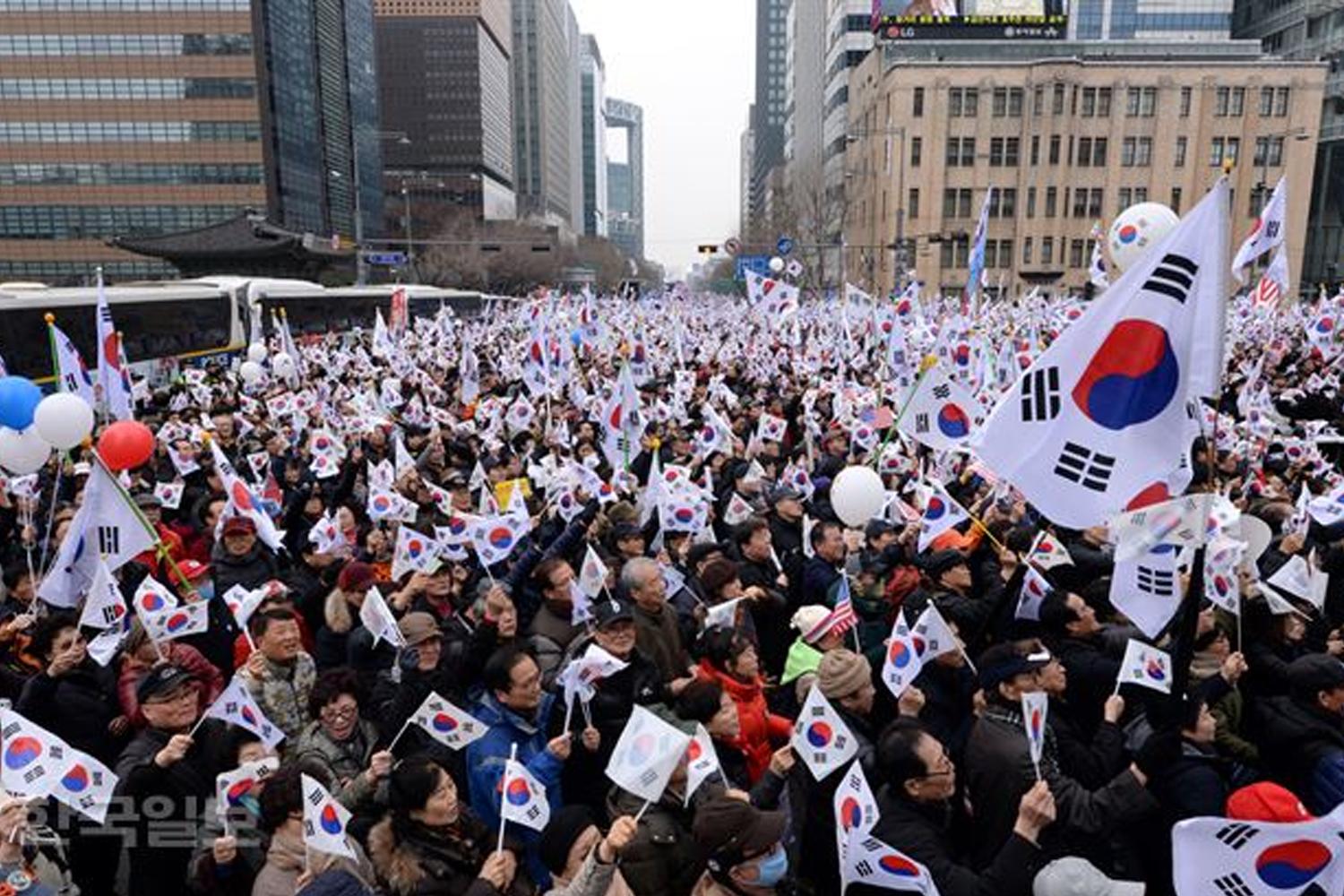 Taegeukgi Unit Gathered To Give Support To Former President Park Geun-hye
Taegeukgi Unit Gathered To Give Support To Former President Park Geun-hye
By using the national flag as a symbol for their political movement, many Koreans feel that they are altering the overall image of the Taegeukgi.
It’s too bad that people's sentiments to the flag are changing and possibly becoming politicized. Hopefully the original positive message of the flag will be highlighted more in the future.
In this article we have learned about the origin and meaning of the Taegeukgi, following its history all the way to present day and identifying recent changes in how Koreans percept it. Thank you for reading!
If you have questions or comments about the blog post, please leave a comment below or email us at help@creatrip.com.

